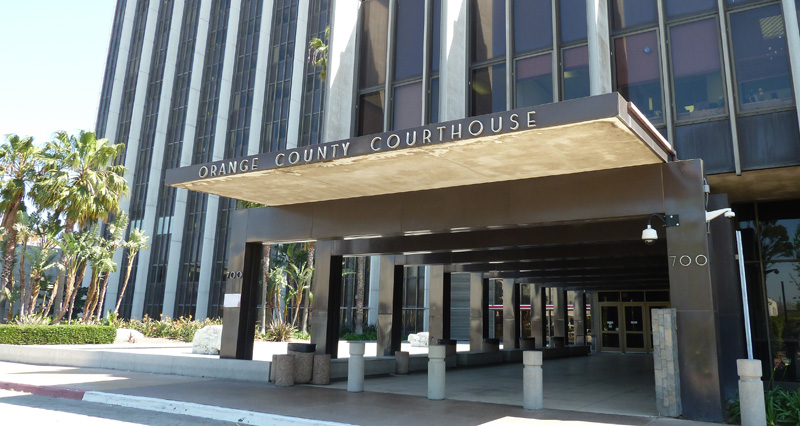22 Sep Watchdog: Overtime Spike Boosts Court Paychecks
The Orange County Superior Court boosted employee paychecks with more overtime last year than almost the rest of the California court system combined, according to a Register analysis of state payroll data.
Although most Superior Courts, including the similar-sized Riverside County court, paid less than $100,000 in overtime last year, the Orange County court spent about $962,000.
Only Los Angeles County paid more overtime than Orange County with $1.6 million. But it also spread that cash across nearly twice as many employees. Los Angeles is a bigger, busier court.
One Orange County employee – whose salary as a programmer was about $100,000 – received $40,000 in overtime alone. It was the most of any Superior Court employee in the state. Two other locals each received more than $19,000.
Orange County Superior Court officials said the spike in overtime last year was driven by new limits on storing cash in reserves. Rather than return excess cash to the state, the court opted to spend it on one-time projects.
The projects included digitizing thousands of criminal court documents and destroying a backlog of old exhibits. Court administrators don’t know exactly how much the two projects cost but expect both will save millions in the long run.
“Our court and the public will benefit for years to come from the overtime hours staff have worked to implement these innovative projects,” spokeswoman Gwen Vieau said.
Court CEO Alan Carlson said destroying old exhibits will make it easier to keep track of records and free up more storage space for new files. The court had 440,000 exhibits in storage in December 2012 – about twice as many as today.
Carlson said he expects the Orange County Superior Court will spend less on overtime next year unless there are similar opportunities for one-time projects with long-term savings. Before last year, the court’s annual expenses typically included less than $400,000 in overtime.
Court employees completed the projects by working overtime shifts on nights and weekends. Court officials said they couldn’t afford to take away employees from their normal duties and hiring others didn’t make financial sense.
Hiring new employees or seeking a contractor for the projects could have added recruitment and training costs and months of delay, Carlson said. By paying existing employees in overtime, the work could begin immediately.
Plus, Vieau said, court employees haven’t received raises in a number of years. Like other government agencies reeling from the recession, the state’s trial court system has seen budgets shrink, positions vanish and wages stagnant.
Carlson said supervisors monitor how overtime is distributed and the risk of employees getting burned out. There are no limits on how much overtime a single employee can work, he said, because it might “thwart activities critical to the operation of the court.”
“There may be only a few staff with the skills and abilities needed to accomplish a particular task who could work the overtime needed,” Carlson said. “Work units have overtime budgets which cannot be exceeded without management approval. Thus, there is close and continuous justification and oversight of overtime use.”
Application developers, technicians and clerks received most of the overtime paid to Orange County Superior Court employees last year. State data show 24 employees each received more than $5,000 in overtime, including two interpreters, a detention release officer and an air-conditioning mechanic.
Timing was a factor in spending the money. Like other Superior Courts across the state, Orange County administrators faced a fiscal cliff of sorts on July 1, 2014. A new limit on storing cash in reserves took effect. Courts had to either spend excess funding or give it back to the state.
Historically, the courts had no cap on reserves. If the Orange County Superior Court had leftover state funding at the end of the budget year, it could roll that cash into a reserve for the following year’s budget. By 2012, the courts had accumulated more than $500 million in reserves, according to estimates by the nonpartian Legislative Analyst’s Office.
Then, two years ago, lawmakers proposed capping reserves in an attempt to ease the immediate pain of budget cuts. The state slashed court funding by $150 million and prohibited individual courts from keeping more than 1 percent of annual expenses in reserves.
In theory, the proposal was arranged so the budget cuts would be offset by courts tapping their reserves. If a court didn’t spend down its reserves to 1 percent by July 1, cash exceeding the limit would return to state coffers.
For example, the Orange County Superior Court had about $38.6 million stored in reserves in 2012 and needed to drop that amount to $2.1 million under the new limits. Other courts across the state opted to tap reserves as well.
“A lot of courts were faced with that – that they would have to spend down their reserves,” said Teresa Ruano, a spokeswoman for the California Judicial Council. “If you have in mind a long-term project, now is a good time.”
During budget discussions earlier this year, the Legislative Analyst’s Office aired concerns that limiting reserves may reduce incentives to operate more efficiently because individual courts “will be unable to benefit directly from the savings created.”
The office recommended lawmakers consider increasing the cap on reserves so courts would have more financial breathing room, but that idea hasn’t gained traction. Ruano said court officials are continuing to discuss easing the cap with lawmakers.
The state Controller’s Office recently released the data online. It includes compensation per court employee but does not include names.


